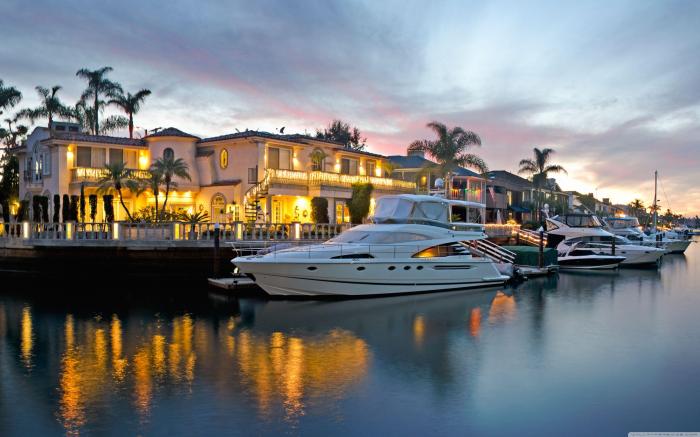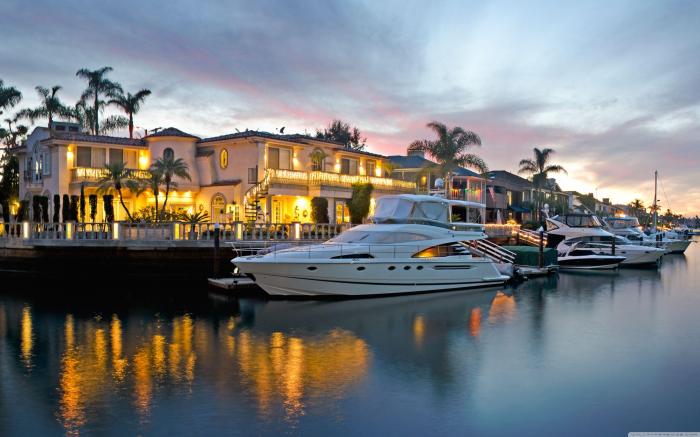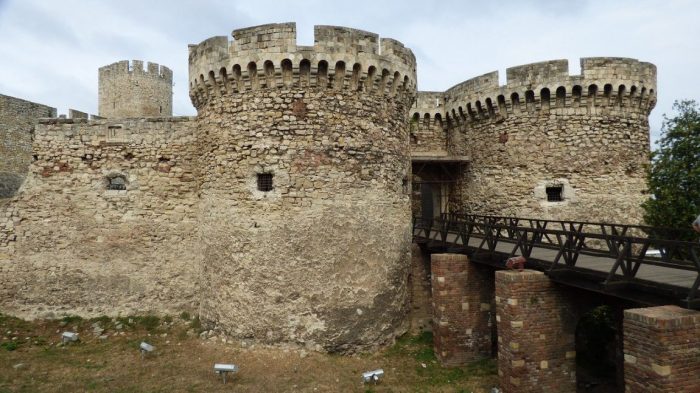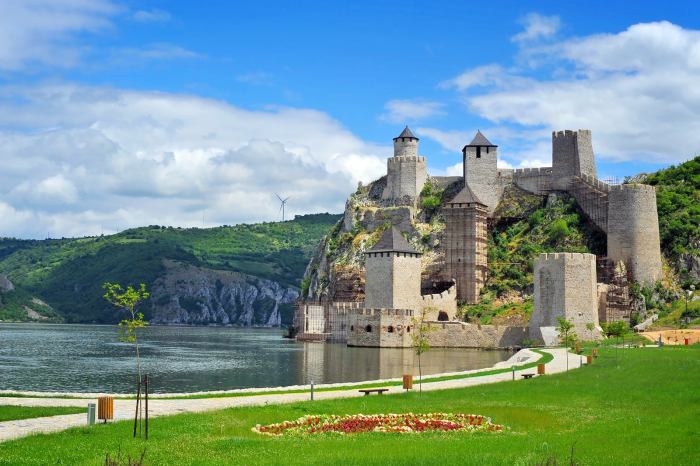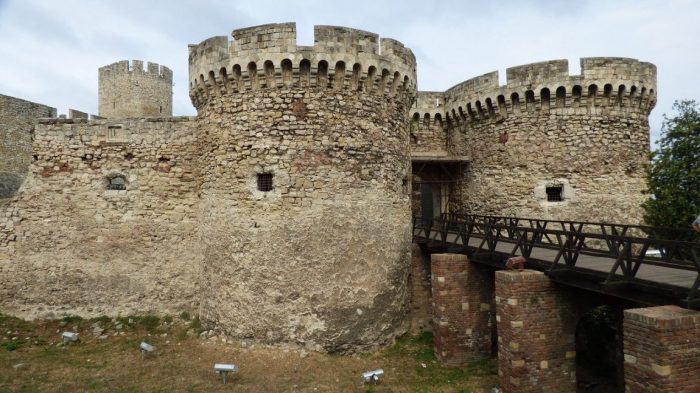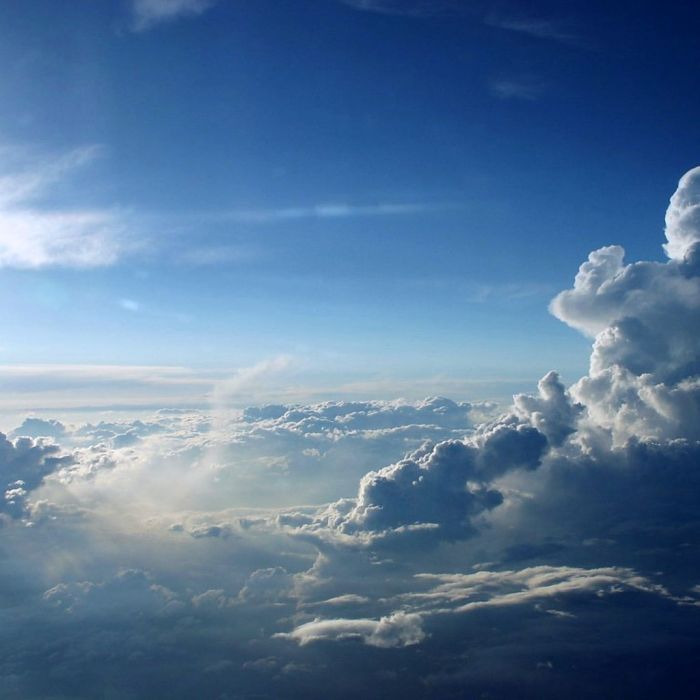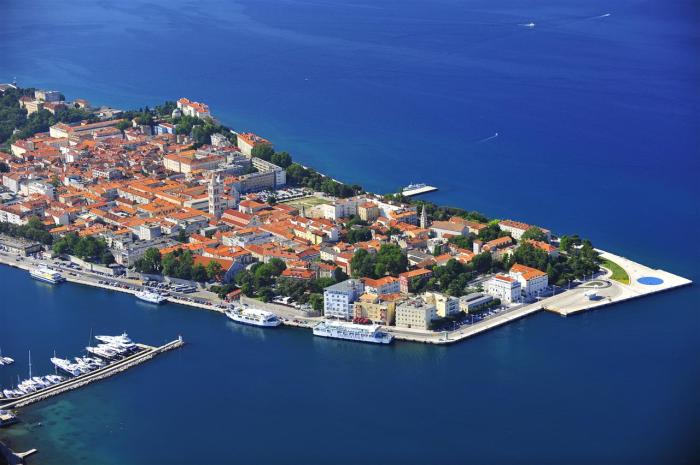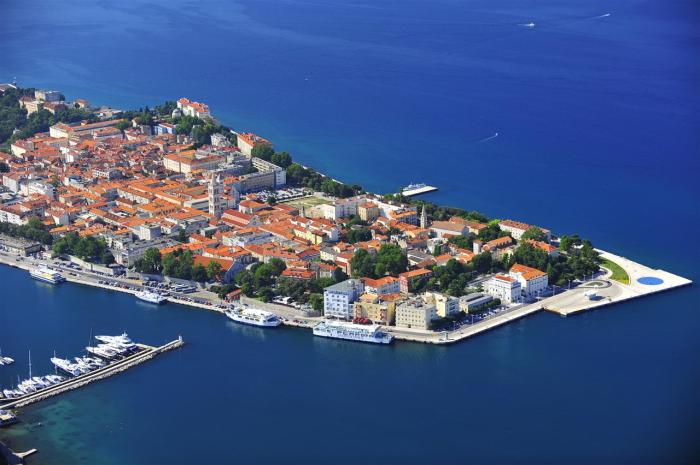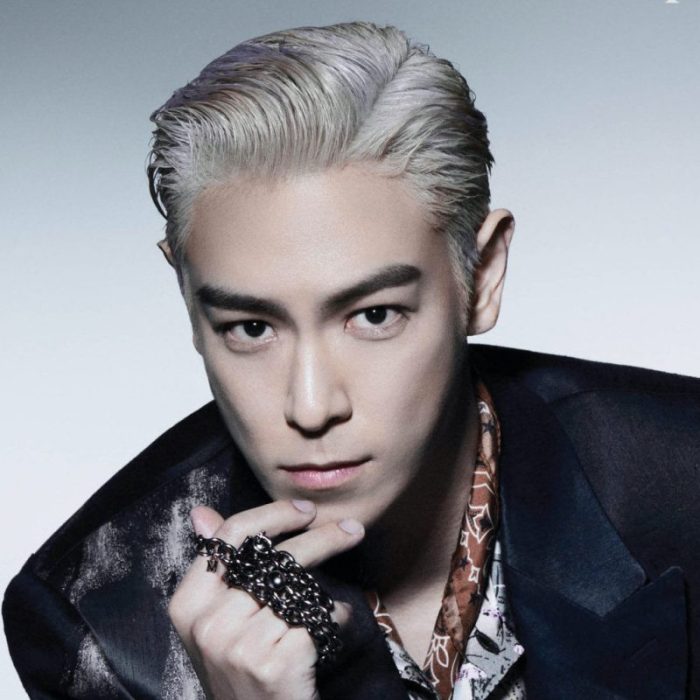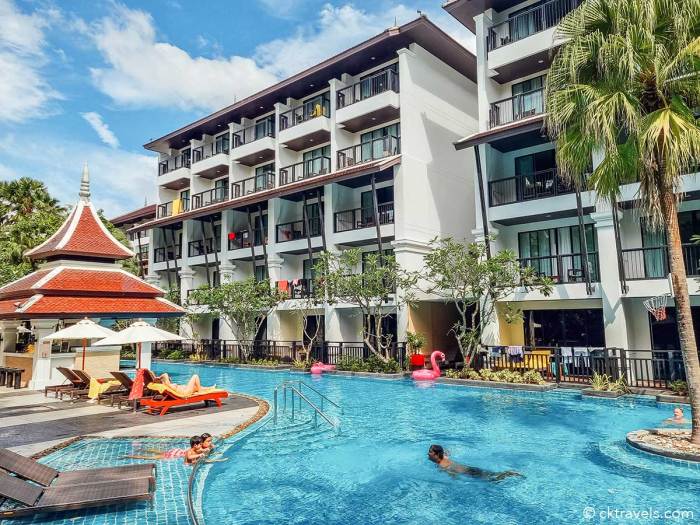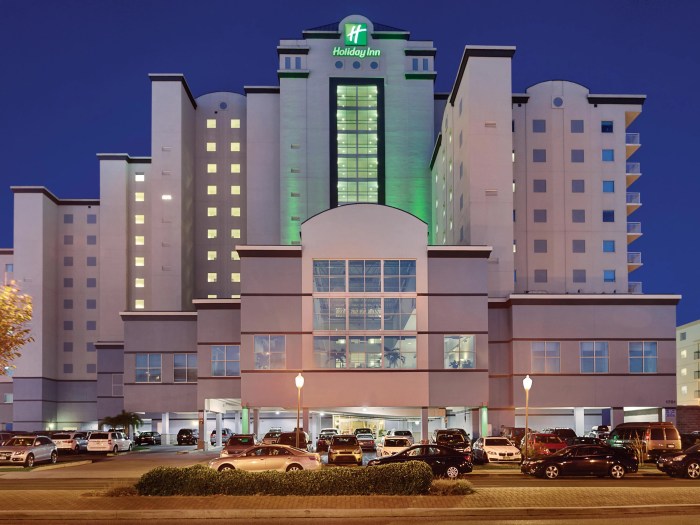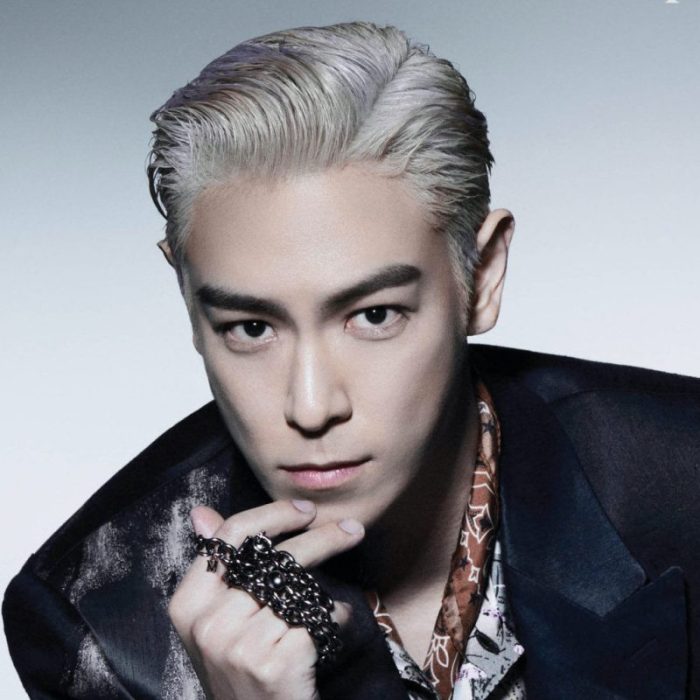Great Smoky Mountains Railroad offers a captivating journey through the breathtaking landscapes of the Smokies. This historic railway, steeped in tradition and rich in history, provides a unique perspective on the region’s beauty and charm. From its scenic routes winding through the mountains to its comfortable carriages, the experience is one of wonder and tranquility.
Discover the history of the railroad, its role in tourism and the local economy, and learn about the different train types and carriages. Explore the various passenger experiences, comparing this mode of transportation to others, and understanding its significance in promoting cultural appreciation.
Overview of the Great Smoky Mountains Railroad

The Great Smoky Mountains Railroad (GSMR) is more than just a train; it’s a living piece of history, weaving through the breathtaking landscapes of the Smoky Mountains. Its journey has been intertwined with the region’s development, offering a unique perspective on its beauty and cultural heritage. This exploration delves into the railroad’s rich past, its significant role in tourism, and its ongoing commitment to preservation.The GSMR’s impact extends far beyond the tracks, profoundly influencing the economic fabric of the region.
Its meticulous preservation efforts ensure this historic mode of transportation remains a cherished part of the Appalachian landscape.
History and Milestones
The GSMR’s history is a testament to perseverance and dedication. Founded in 1983, the railroad initially focused on reviving and operating the existing rail lines, a critical undertaking to preserve the area’s historical heritage. The 1990s witnessed the completion of crucial restoration projects, bringing the railroad’s iconic steam engines and passenger cars back to life. The 21st century has seen the railroad expand its services, introducing new passenger cars and implementing improved safety measures, ensuring a safe and enjoyable experience for travelers.
Role in Tourism and Economic Development
The GSMR is a vital component of the Smoky Mountains’ tourism industry. Its picturesque journeys through the mountains attract visitors from across the country and beyond. This influx of tourists significantly boosts the local economy, supporting businesses, hotels, and other services within the region. The railroad provides employment opportunities, fostering a sustainable economic ecosystem for the surrounding communities.
Types of Trains and Carriages
The GSMR offers various types of trains, catering to diverse preferences. Steam engines, meticulously restored to their former glory, provide a unique and immersive experience, evoking the charm of yesteryear. Modern diesel-powered trains offer comfort and efficiency, ensuring a smooth and enjoyable ride for passengers. The different types of passenger cars, ranging from classic accommodations to modern amenities, accommodate a wide spectrum of needs and preferences.
Preservation Efforts
The GSMR’s commitment to preservation is deeply rooted in its mission. This includes meticulously restoring historical locomotives and passenger cars, maintaining the authenticity of the railroad’s heritage. This ongoing effort ensures that future generations can appreciate the beauty and history of the railroad and the region. Furthermore, the railroad actively collaborates with local communities and historical societies to preserve the region’s rich cultural heritage, contributing to the region’s historical narrative.
Train Routes and Details
The GSMR boasts various routes, each offering unique scenery. This diversity caters to a wide range of interests.
| Route | Duration (approx.) | Typical Scenery | Notes |
|---|---|---|---|
| Cades Cove Loop | 3-4 hours | Rolling hills, lush forests, stunning vistas, and historic Cades Cove | Popular choice for scenic views and exploring the natural beauty. |
| Gatlinburg to Cherokee | 4-5 hours | Mountainous terrain, forested valleys, and glimpses of historical landmarks | Connects two key tourist destinations. |
| Newfound Gap | 2-3 hours | High mountain passes, cascading waterfalls, and diverse wildlife | A route focusing on high-elevation beauty. |
Experiences on the Great Smoky Mountains Railroad
Embarking on a journey aboard the Great Smoky Mountains Railroad is more than just a trip; it’s an immersive experience that transports you to a realm of breathtaking beauty and captivating storytelling. The rhythmic chugging of the train, the gentle sway, and the panoramic views combine to create an atmosphere unlike any other mode of transportation. This unique experience transcends the typical tourist excursion, inviting you to appreciate the region’s natural wonders and cultural heritage.The passenger experience is meticulously crafted to provide comfort and convenience.
The meticulously maintained carriages, reminiscent of bygone eras, offer a blend of historical charm and modern amenities. From plush seating to well-stocked dining cars, the railroad prioritizes the comfort and enjoyment of its passengers.
Typical Passenger Experience
The journey on the Great Smoky Mountains Railroad is meticulously designed to cater to a diverse range of passenger preferences. Passengers are treated to a comfortable and enjoyable experience, with thoughtfully curated amenities. Clean, well-maintained carriages, equipped with comfortable seating and ample legroom, ensure a pleasant journey. The dining cars, known for their exquisite cuisine and attentive service, offer a delectable culinary experience.
In addition, restrooms and other facilities are conveniently located throughout the train, enhancing the overall passenger experience.
Taking a scenic train ride on the Great Smoky Mountains Railroad is a must-do. The stunning views are unforgettable, but don’t forget to pack the right essentials, like a great travel size sunscreen to protect your skin from the sun. Best travel size sunscreen is key for enjoying the outdoors without worrying about sunburn, and then you can fully immerse yourself in the breathtaking mountain scenery during your journey on the Great Smoky Mountains Railroad.
Unique Aspects of a Journey
The railroad journey offers a distinctive perspective of the Great Smoky Mountains. The slow pace of the train allows passengers to fully appreciate the breathtaking scenery unfolding before them. The gentle rhythm of the train, combined with the rustling leaves and chirping birds, creates a tranquil atmosphere. Furthermore, expert narration and storytelling enhance the journey, providing insight into the region’s history, ecology, and culture.
This immersive experience goes beyond a simple sightseeing tour, transforming it into a captivating journey of discovery.
Scenery and Atmosphere
The Great Smoky Mountains Railroad offers a unique vantage point for witnessing the breathtaking beauty of the region. Rolling hills, lush forests, cascading waterfalls, and majestic mountain peaks come alive as the train winds its way through the picturesque landscape. The atmosphere is one of tranquility and awe, punctuated by the occasional glimpse of wildlife. The gentle rocking of the train, the soft sounds of nature, and the breathtaking vistas contribute to an immersive and memorable experience.
Storytelling and Narration
Experienced guides and narrators provide engaging narratives that bring the region’s history and ecology to life. These stories often encompass the region’s rich heritage, from Native American traditions to the tales of early settlers and pioneers. This storytelling enhances the visual experience, transforming a mere journey into an educational and enriching experience.
Comparison with Other Transportation Options
Compared to other transportation options, such as cars or buses, the Great Smoky Mountains Railroad offers a distinct and immersive experience. While cars offer flexibility and personal control, they often fail to capture the panoramic views and the unique ambiance of a train journey. Buses, while more affordable, lack the historical charm and immersive atmosphere provided by the railroad.
The railroad provides a unique opportunity to appreciate the region’s beauty from a different perspective, fostering a sense of connection and wonder.
Role in Cultural Appreciation
The railroad plays a vital role in promoting cultural appreciation and understanding. Through expert narration and storytelling, passengers gain insight into the region’s history, ecology, and diverse cultures. This immersive experience transcends the typical tourist experience, fostering a deeper appreciation and understanding of the area’s heritage. The railroad acts as a bridge, connecting visitors with the rich tapestry of the region’s past and present.
Classes of Travel Comparison
| Class | Pricing | Seating | Included Services |
|---|---|---|---|
| Coach | Affordable | Standard seating | Basic amenities like restrooms and access to the dining car |
| Deluxe | Mid-range | More spacious seating, often with extra legroom and wider seats | All amenities of coach class, plus complimentary snacks and beverages in designated areas |
| Dining Car | Higher | Seating specifically in the dining car | Includes meals and beverages, plus the amenities of coach and deluxe classes |
The Railroad’s Impact on the Environment
The Great Smoky Mountains Railroad, a vital part of the region’s tourism, also plays a crucial role in environmental stewardship. Its operations are carefully considered to minimize their impact on the delicate ecosystem of the Great Smoky Mountains National Park. From energy efficiency to waste management, the railroad is actively working towards sustainable practices.The railroad recognizes the responsibility that comes with operating within such a pristine environment.
Their commitment to minimizing their environmental footprint is reflected in their operational strategies and ongoing conservation efforts. The railroad’s dedication to sustainable practices is not just about minimizing harm; it’s also about actively contributing to the preservation of the park’s natural beauty and the overall health of the region.
Energy Consumption and Efficiency
The Great Smoky Mountains Railroad prioritizes energy efficiency in its operations. They utilize a combination of strategies to reduce their energy consumption. This includes optimizing engine performance, using alternative fuel sources where available, and implementing advanced technologies for monitoring and managing energy use. This proactive approach to energy efficiency directly impacts the railroad’s carbon footprint and overall environmental impact.
Waste Management Practices, Great smoky mountains railroad
The railroad implements comprehensive waste management programs to minimize the impact on the surrounding environment. These programs include proper waste segregation, recycling initiatives, and partnerships with local waste management facilities. They ensure that waste is handled responsibly, reducing the amount of waste ending up in landfills. The railroad also works to reduce single-use plastics in their operations.
Preserving Natural Beauty
The Great Smoky Mountains Railroad actively works to preserve the natural beauty of the Great Smoky Mountains National Park. Their routes are carefully planned to minimize disruption to wildlife habitats and sensitive ecosystems. The railroad’s staff is trained to observe and respond to environmental concerns, and the railroad actively participates in efforts to protect endangered species. They also support the park’s efforts to preserve its unique natural resources.
Sustainable Tourism Initiatives
The railroad supports sustainable tourism initiatives by promoting responsible visitor behavior. They provide educational materials to visitors about the park’s ecosystems and encourage responsible travel practices. They also work with local businesses and organizations to promote sustainable tourism within the region. By educating tourists about the park’s delicate ecosystem, the railroad contributes to the long-term health of the environment.
Conservation Efforts
The railroad actively participates in conservation efforts through financial contributions and volunteerism. They support organizations working to protect the park’s natural resources, including wildlife, forests, and water bodies. These partnerships are crucial in ensuring the long-term preservation of the unique ecosystem of the Great Smoky Mountains.
The Great Smoky Mountains Railroad offers breathtaking views, a perfect way to experience the stunning scenery. While you’re dreaming of mountain adventures, have you considered exploring the incredible landscapes of Kyrgyzstan? For a truly unforgettable journey, check out some of the best places to visit in Kyrgyzstan, like the soaring peaks and lush valleys. best places to visit in kyrgyzstan will have you planning your next trip in no time.
The Smoky Mountains Railroad is a fantastic way to enjoy the natural beauty of the region.
Sustainable Practices Implemented by the Railroad
| Sustainable Practice | Benefits | Environmental Impact | Examples |
|---|---|---|---|
| Energy Efficiency | Reduced carbon emissions, lower operating costs, enhanced operational reliability | Lower environmental impact from fossil fuel consumption, reduced greenhouse gas emissions | Optimized engine performance, use of alternative fuels, advanced energy management systems |
| Waste Management | Minimized waste disposal, reduced landfill burden, improved public image | Reduced pollution, conservation of resources, improved environmental health | Waste segregation, recycling programs, partnership with local waste management facilities |
| Route Planning | Minimized disturbance to wildlife habitats and sensitive ecosystems, preservation of natural beauty | Protection of biodiversity, preservation of natural resources, improved ecosystem health | Carefully planned routes that avoid sensitive areas, support for endangered species protection |
| Sustainable Tourism Initiatives | Increased awareness of environmental concerns among visitors, responsible travel practices | Reduced environmental impact from tourism, promotion of sustainable practices | Educational materials for visitors, partnerships with local businesses |
The Great Smoky Mountains Railroad and Local Communities
The Great Smoky Mountains Railroad isn’t just a scenic journey; it’s a vital economic thread woven into the fabric of the communities it traverses. From boosting local businesses to providing employment opportunities, the railroad plays a crucial role in preserving the unique character of the region. Its impact extends beyond the tracks, shaping the cultural landscape and fostering a sense of community pride.The railroad’s presence is deeply intertwined with the economic well-being of local communities.
It attracts tourists from near and far, creating a ripple effect that benefits numerous businesses along its route. These businesses, from quaint shops to restaurants, rely on the influx of visitors the railroad brings, directly supporting local economies and fostering a vibrant local atmosphere.
Economic Benefits to Local Communities
The railroad generates significant revenue for local communities through increased tourism. Visitors spend money on lodging, food, souvenirs, and activities, directly benefiting local businesses. The railroad itself employs numerous people, creating jobs and contributing to the local tax base. This influx of spending and employment opportunities has a positive cascading effect on the overall economic health of the region.
Employment Opportunities
The Great Smoky Mountains Railroad offers a wide range of employment opportunities, from train engineers and conductors to ticket agents, maintenance personnel, and hospitality staff. These jobs provide stable income and career development prospects, particularly in areas where other employment options might be limited. Many employees are local residents, ensuring the benefits of employment are directly felt within the communities.
Preservation of Local Traditions and Culture
The railroad, with its historic trains and meticulously preserved stations, serves as a living museum, showcasing the region’s history and culture. It allows tourists to experience the local traditions and heritage firsthand, providing a deeper understanding and appreciation for the area’s rich past. The railroad also encourages the preservation of local crafts and traditions, often featuring them in displays or collaborations.
Contributions to the Cultural Landscape
The railroad has profoundly shaped the cultural landscape of the region. Its presence has fostered a sense of community pride and historical appreciation. The unique charm of the historic railroad stations and the nostalgic experience of train travel have become integral parts of the region’s identity. The railroad’s ongoing restoration efforts maintain a connection to the past while ensuring a vibrant future.
Impact on Local Businesses, Employment, and Community Engagement
| Local Business Impact | Employment Statistics | Community Engagement Activities | Examples |
|---|---|---|---|
| Increased foot traffic, higher sales, and revenue for local businesses such as hotels, restaurants, gift shops, and souvenir stores. | Direct employment of local residents in various roles, from conductors to ticket agents to maintenance workers, to hospitality staff. | Partnerships with local organizations for community events, festivals, and fundraising initiatives. Potential for supporting local arts and crafts through exhibits and sales. | Increased sales at local restaurants and gift shops, and rise in hotel occupancy rates during the tourist season. Local residents employed as conductors, ticket agents, and maintenance workers. Partnership with local historical societies to organize historical train tours. |
Planning a Trip
Embarking on a journey aboard the Great Smoky Mountains Railroad is more than just a ride; it’s an immersive experience. Careful planning ensures a seamless and enjoyable trip, allowing you to fully appreciate the breathtaking scenery and charming atmosphere. This section will guide you through the essential steps of booking, choosing packages, and maximizing your time on the rails.
Booking Tickets and Reservations
The Great Smoky Mountains Railroad offers various booking options to accommodate diverse travel styles. Online booking through their official website is the most convenient method, allowing for immediate confirmation and access to detailed information about schedules and available seats. Alternatively, you can book through travel agents or by contacting the railroad directly. Making reservations well in advance is highly recommended, especially during peak seasons, to secure your preferred dates and times.
Consider group discounts for larger parties.
Types of Packages and Tours
The railroad provides a variety of packages, from simple day trips to multi-day excursions. These packages often include scenic train rides, access to local attractions, and potentially meals. Some packages cater to specific interests, such as nature enthusiasts or those seeking a historical journey. The “Smoky Mountain Explorer” package, for instance, might combine a train ride with visits to nearby historical sites and hiking trails.
Dining and Lodging Options
Numerous dining establishments and lodging options are located near the railroad’s stations. This allows for a convenient integration of your travel plans. Restaurants offer diverse culinary experiences, from casual cafes to upscale dining options. Hotels and bed and breakfasts provide various accommodations, from budget-friendly options to luxurious stays, often offering packages that combine train travel with overnight stays.
Consider researching options based on your budget and preferences.
Maximizing Your Experience
To maximize your experience, plan your activities around the train schedule. For instance, if you have a specific attraction you want to visit, check the train’s schedule to see if it aligns with your desired timeframe. Pack comfortable shoes for potential walking excursions. Bring layers of clothing to accommodate changing weather conditions in the mountains. Also, familiarize yourself with the available amenities on board, such as restrooms and onboard services.
Package Comparison Table
| Package Name | Pricing (per person) | Activities | Included Services |
|---|---|---|---|
| Basic Day Trip | $50-$100 | Train ride, scenic views | Round-trip train ticket, limited access to restrooms |
| Smoky Mountain Explorer | $150-$250 | Train ride, historical site visit, optional hiking | Round-trip train ticket, entrance fee to attraction, guided tour, lunch |
| Weekend Getaway | $250-$400 | Train ride, overnight stay, breakfast, dinner | Round-trip train ticket, overnight stay at a local hotel, breakfast and dinner |
| Family Fun Package | $100-$200 (per person) | Train ride, activities for kids, lunch | Round-trip train ticket, kids’ activities, meal |
Historical Context and Preservation
The Great Smoky Mountains Railroad isn’t just a scenic train ride; it’s a living piece of history, a testament to the region’s past and a crucial element of its present. Its story intertwines with the development of the Appalachian Mountains, reflecting the area’s evolution from a remote wilderness to a popular tourist destination. Understanding its historical significance is key to appreciating the railroad’s value and the efforts to preserve it.The railroad’s presence significantly impacted the development of the Smoky Mountains region.
It facilitated access to previously isolated communities, brought in tourism, and spurred economic growth. This development wasn’t without challenges, but the railroad ultimately played a vital role in shaping the region’s identity and economy. Preservation efforts are crucial to maintaining this legacy.
Historical Significance in Regional Development
The railroad’s arrival in the Great Smoky Mountains marked a turning point. It connected previously isolated communities, allowing for easier trade and transportation of goods. This facilitated the growth of small towns and attracted settlers, transforming the landscape from a largely unexplored wilderness to a more accessible and developed region. The railroad became a vital artery, linking the region to the outside world, and stimulating economic activity through tourism and transportation of resources.
The construction of the railroad required a considerable investment of resources and labor, further accelerating the region’s economic development.
Preservation Efforts
Preservation efforts for the Great Smoky Mountains Railroad encompass a multitude of initiatives. Dedicated volunteers, passionate about maintaining the railroad’s historical character, actively participate in restoration projects. These efforts include meticulous repairs and maintenance of locomotives, cars, and infrastructure. The preservation of the historic depots and stations, with their unique architectural features, are also critical components of this work.
Ever thought about taking a scenic train ride through the Great Smoky Mountains Railroad? It’s a fantastic way to experience the beauty of the region. While planning my next trip, I stumbled upon news of JetBlue’s new flight from NYC to Dublin, jetblue new flight nyc dublin , which could open up some exciting travel possibilities for me in the future.
The thought of combining a relaxing train journey with potentially a flight across the Atlantic is intriguing. I’m still leaning toward the Great Smoky Mountains Railroad for my next adventure, though!
These endeavors ensure the railroad’s legacy is maintained for future generations. Furthermore, careful documentation of the railroad’s history through archives, photographs, and oral histories helps ensure that the stories and experiences are preserved.
Significant Architectural Elements
The railroad’s architecture reflects the styles of the era in which the various stations and depots were constructed. Early stations often exhibited elements of Craftsman or Victorian design, while later structures incorporated more modern elements. The design of the locomotives themselves, from their powerful engines to their intricate detailing, also showcases the engineering and artistry of the time.
These architectural elements are not only aesthetically pleasing but also hold significant historical value. The depots, for example, serve as physical reminders of the railroad’s impact on the local communities.
Historical Timeline of the Railroad
The following table Artikels key events and preserved structures associated with the Great Smoky Mountains Railroad, demonstrating its rich history and the commitment to its preservation.
| Year | Key Event | Preserved Structure(s) | Description |
|---|---|---|---|
| 1880s | Initial surveys and planning for the railroad | Early blueprints, maps | Early planning and design documents, crucial for understanding the initial development stages. |
| 1900s | Construction of major lines and stations | Various depots, sections of track | Essential for understanding the expansion of the railroad and its physical footprint. |
| 1920s-1930s | Peak operation and expansion of tourism | Notable locomotives, passenger cars | The period of greatest activity and influence, showing the importance of the railroad in the region’s economy. |
| 1950s-present | Preservation efforts, modernization, and continued operation | Restorations, renovated stations | Shows ongoing commitment to keeping the railroad a living historical monument. |
Safety and Accessibility
The Great Smoky Mountains Railroad prioritizes the safety and well-being of its passengers, ensuring a memorable and secure journey through the stunning landscapes. A comprehensive safety plan, combined with accessible features, allows individuals with diverse needs to experience the beauty of the mountains. This commitment to passenger well-being is reflected in the railroad’s protocols and procedures.
Safety Measures
The railroad maintains rigorous safety protocols, focusing on preventing accidents and ensuring passenger comfort. These include comprehensive pre-trip inspections of the train, adherence to strict speed limits, and the maintenance of well-trained staff. Safety equipment, including emergency exits, fire extinguishers, and first aid kits, are strategically positioned throughout the train. Regular safety drills and training for both staff and passengers enhance preparedness for potential situations.
Furthermore, the railroad employs advanced communication systems for rapid response to any unforeseen circumstances.
Accessibility Features
The Great Smoky Mountains Railroad strives to accommodate passengers with diverse needs, ensuring a welcoming experience for everyone. Features like wheelchair ramps, accessible restrooms, and designated seating areas are designed to make travel smooth and comfortable for individuals with mobility limitations. Assistance is available upon request, ensuring a supportive and inclusive environment. The train’s design incorporates wide aisles and clear signage to improve navigation for passengers with visual or cognitive impairments.
Emergency Response Protocols
A robust emergency response plan is in place to ensure prompt and effective action in case of any incident. Trained personnel are available to handle emergencies, providing immediate assistance and support. Emergency exits and evacuation procedures are clearly marked and practiced regularly. The railroad maintains close communication with local emergency services to ensure rapid response and coordinated action in case of an emergency.
Detailed procedures are available for passengers and staff to follow.
Tips for a Smooth and Safe Trip
To ensure a safe and enjoyable journey, passengers are encouraged to arrive at the station early. Familiarizing themselves with the train layout, emergency exits, and accessibility features will ease travel. Following crew instructions and adhering to safety regulations is crucial for everyone’s well-being. By preparing in advance, passengers can contribute to a smooth and safe experience. This includes confirming accessibility needs ahead of time.
Accessibility Details, Emergency Contacts, and Safety Protocols
| Accessibility Feature | Emergency Contact | Safety Protocol | Additional Notes |
|---|---|---|---|
| Wheelchair ramps and accessible restrooms | 911, Local Emergency Services | Regular safety briefings and drills | Passengers can request assistance at the ticket counter. |
| Designated seating areas | Emergency Response Team | Clear signage for emergency exits | Passengers should inform staff of any special needs. |
| Wide aisles and clear signage | Train Conductor | Strict adherence to speed limits | Familiarize yourself with the train layout. |
| Assistance upon request | Train Operator | Comprehensive pre-trip inspections | Request assistance at the ticket counter. |
Images and Visuals
The Great Smoky Mountains Railroad isn’t just about transportation; it’s a visual experience. From the majestic peaks to the vibrant flora and fauna, every journey offers a unique panorama. The beauty of the scenery, coupled with the historic charm of the locomotives and carriages, creates a captivating narrative. The railroad embodies the spirit of the Smokies, making every moment a picture-perfect memory.The train journey through the Great Smoky Mountains National Park showcases a spectacular array of views.
The changing landscapes, from dense forests to sun-drenched meadows, provide an ever-evolving visual feast. The train itself, a part of the experience, is a testament to the region’s rich history and scenic beauty.
Scenic Views
The views along the Great Smoky Mountains Railroad are breathtaking. The varying elevations and the dense forests create a dramatic backdrop. Emerald green valleys, dotted with vibrant wildflowers, contrast with the towering peaks, shrouded in mist or bathed in sunlight. The changing seasons paint the landscape in a kaleidoscope of colors, from the fiery reds and oranges of autumn to the lush greens of spring.
The views from the train offer a unique perspective, allowing passengers to fully appreciate the scale and majesty of the mountains.
Locomotives and Their Significance
The railroad’s locomotives are not just engines; they are historical artifacts. Each locomotive tells a story, representing a specific era of railroading and reflecting the technological advancements of the time. Some locomotives, meticulously restored to their original glory, are symbols of preservation and heritage. The sight of these powerful machines, chugging through the mountains, is a powerful reminder of the region’s industrial past and the ongoing commitment to historical preservation.
Examples include the restoration of vintage steam locomotives, showcasing their impressive size and the intricate details of their design.
Carriages and Cars
The carriages and cars, with their unique designs and period-appropriate interiors, add to the historic charm of the journey. Some are meticulously restored, reflecting the style and craftsmanship of a bygone era. Others retain their original features, showcasing the evolution of railroad passenger accommodations. The vintage furnishings and details within these cars create a tangible connection to the past, transporting passengers back in time.
Different carriages offer varied levels of comfort and amenities, reflecting the evolution of train travel. Imagine the elegance of a vintage coach, with its plush seating and intricate woodwork, contrasted with the modern conveniences of some of the newer cars.
Flora and Fauna
The Great Smoky Mountains National Park is a haven for diverse flora and fauna. The train journey offers numerous opportunities to spot a variety of birds, such as the majestic bald eagle, or the colorful wild turkey. A plethora of wildflowers and trees, each with their unique characteristics, can be seen along the tracks. Observing the wildlife in their natural habitat is a rewarding part of the experience.
Deer grazing in meadows, or squirrels darting through the trees, are common sights. The diversity of plant and animal life is a testament to the park’s ecological importance.
Historic Charm
A scene showcasing the historic charm of the railroad might depict a vintage locomotive, meticulously restored, pulling a train of elegantly designed carriages through a picturesque mountain valley. The sight of passengers in period attire enjoying the journey, or the glimpse of a historic station with its rustic charm, adds to the evocative experience. The juxtaposition of the modern-day traveler with the historical setting of the railroad is a captivating element.
The overall scene evokes a sense of nostalgia and appreciation for the past.
Unique Landscape
The landscape encountered during a journey varies considerably, reflecting the diverse terrain of the mountains. The journey might traverse through dense forests, cross over rushing rivers, and ascend into higher altitudes, with the breathtaking vistas opening up as the train climbs higher. The constantly changing terrain creates a sense of wonder and exploration, ensuring each mile of the journey is distinct.
The dramatic changes in elevation and vegetation are a defining characteristic of the experience.
Mountain Views
The beauty of the mountain views during a journey is unparalleled. The majestic peaks, the lush valleys, and the sparkling streams create a breathtaking panorama. The varying light conditions, from sunrise to sunset, paint the mountains in a different light each time. The views are a testament to the raw beauty of nature. A clear day allows passengers to fully appreciate the panoramic vistas.
Last Point: Great Smoky Mountains Railroad

The Great Smoky Mountains Railroad is more than just a train ride; it’s a journey through time, nature, and community. It showcases the region’s history, its commitment to environmental sustainability, and its vital role in the local economy. From its scenic routes to its historical significance, the railroad is a treasure to experience, offering an unforgettable way to connect with the heart of the Smokies.



